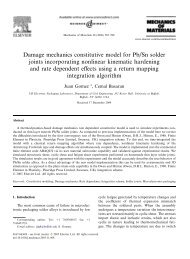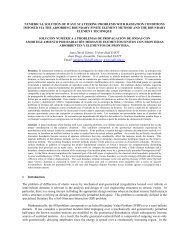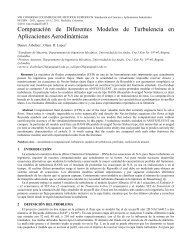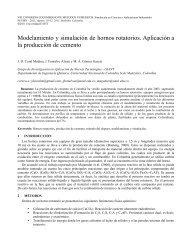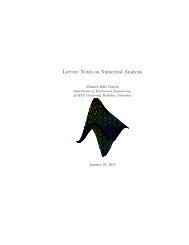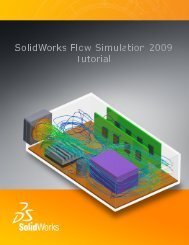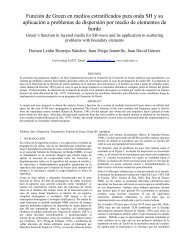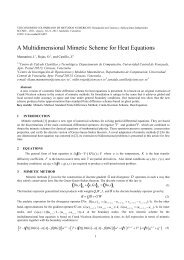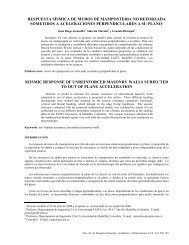Workbench Mechanical - Introduction to Contact
Workbench Mechanical - Introduction to Contact
Workbench Mechanical - Introduction to Contact
Create successful ePaper yourself
Turn your PDF publications into a flip-book with our unique Google optimized e-Paper software.
<strong>Workbench</strong> <strong>Mechanical</strong> - <strong>Introduction</strong> <strong>to</strong> <strong>Contact</strong><br />
… Symmetric/Asymmetric<br />
Training Manual<br />
• Symmetric Behavior:<br />
– Easier <strong>to</strong> set up (Default in <strong>Workbench</strong>-<strong>Mechanical</strong>)<br />
– More computationally expensive.<br />
– Interpreting data such as actual contact pressure can be more difficult<br />
• Results are reported on both sets of surfaces<br />
• Asymmetric Behavior:<br />
– <strong>Workbench</strong>-<strong>Mechanical</strong> can au<strong>to</strong>matically perform this designation (Au<strong>to</strong>-<br />
Asymmetric) or…<br />
– User can designate the appropriate surface(s) for contact and target<br />
manually .<br />
• Selection of inappropriate <strong>Contact</strong> vs.Target may affect results.<br />
– Reviewing results is easy and straightforward. All data is on the contact<br />
side.<br />
ANSYS, Inc. Proprietary<br />
© 2009 ANSYS, Inc. All rights reserved.<br />
3-30<br />
April 30, 2009<br />
Inven<strong>to</strong>ry #002659



